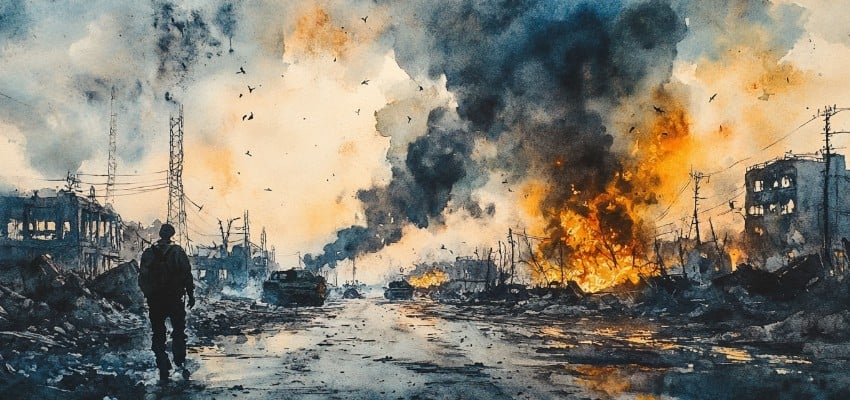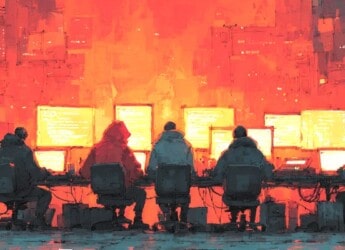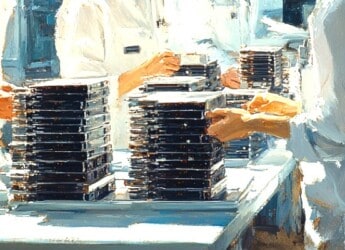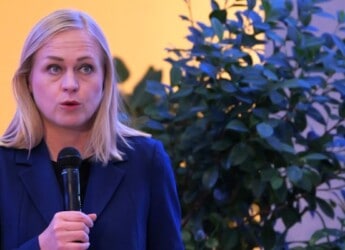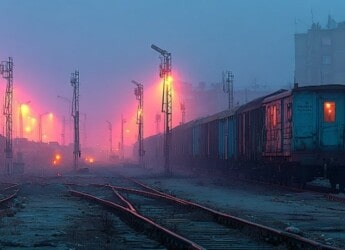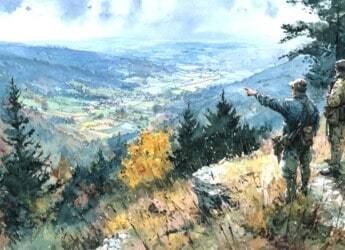Editor’s Note: This article offers a concise exploration of the evolving Russo-Ukrainian war, focusing on the alarming escalation in Russia’s use of banned chemical weapons and Ukraine’s persistent resistance. With over 5,000 documented cases of chemical weapon usage since February 2023, including 434 instances in December 2024 alone, these violations underscore the harsh realities of modern warfare and the challenges faced by Ukraine. Against this backdrop, the article highlights Ukraine’s capacity for precision strikes, its steadfast defensive operations across contested frontlines, and the broader geopolitical shifts influencing the conflict. From targeted strikes on Russian oil depots and air defenses to NATO’s preparations for joint exercises with Georgia, this piece provides a factual and detailed narrative of the war’s latest developments. It underscores not only the brutality of the conflict but also the resilience and ingenuity of Ukraine as it confronts military aggression and violations of international law.
For those seeking to grasp the full scope of this evolving landscape, the complete updates from the Institute for the Study of War serve as an invaluable resource.
Content Assessment: The Shadow of Chemical Warfare: Ukraine's Fight Against Escalating Aggression
Information - 94%
Insight - 95%
Relevance - 92%
Objectivity - 92%
Authority - 95%
94%
Excellent
A short percentage-based assessment of the qualitative benefit expressed as a percentage of positive reception of the recent article from ComplexDiscovery OÜ titled, "The Shadow of Chemical Warfare: Ukraine's Fight Against Escalating Aggression."
Background Note: ComplexDiscovery’s staff offers distinctive perspectives on the Russo-Ukrainian war and Middle Eastern conflicts, informed by military experience on the West German, East German, and Czechoslovakian border during the Cold War and in Sinai as part of Camp David Accord compliance activities. This firsthand regional knowledge has been further enhanced by recent staff travels to Eastern European countries, including Estonia, Finland, Latvia, Lithuania, and Poland. These visits have provided up-to-date, on-the-ground insights into the current geopolitical climate in regions directly impacted by the ongoing conflict.
Combined with cybersecurity, information governance, and eDiscovery proficiency, this multifaceted experience enables comprehensive analysis of these conflicts, including the critical impact of cyber warfare, disinformation, and digital forensics on modern military engagements. This unique background positions ComplexDiscovery to provide valuable insights for conflict-related investigations and litigation, where understanding the interplay of technology, data, and geopolitical factors is crucial.
Russo-Ukrainian Conflict Update*
The Shadow of Chemical Warfare: Ukraine’s Fight Against Escalating Aggression
ComplexDiscovery Staff
In the harsh winter of January 2025, the ongoing Russo-Ukrainian war continues to evolve. Ukrainian officials reported continued use of chemical agents by Russian forces, with 434 documented instances in December 2024 and a total of 5,389 cases since February 2023. These weapons, banned under the Chemical Weapons Convention and the 1925 Geneva Protocol, include munitions fired from K-51 and RG-VO grenade launchers and other hazardous substances. Ukrainian radiation, chemical, and biological intelligence units remain vigilant in monitoring these violations, which contravene international law. The deployment of chemical agents has increased the physical and psychological toll on Ukrainian soldiers and civilians.
Amid this dark reality, Ukraine has demonstrated remarkable resilience and ingenuity. On the night of January 17–18, Ukrainian forces struck back with precision. Special Operations Forces targeted two critical Russian oil depots in Kaluga and Tula Oblasts, causing fires that disrupted supply lines and logistics. In tandem, Ukrainian units executed targeted strikes on Russian air defense systems, including a Nebo-SVU radar in Kherson Oblast and components of Buk-M3 and S-300 systems in Donetsk Oblast. These operations highlight Ukraine’s growing capacity for deep strikes into Russian-controlled territory, reflecting a tactical acumen that continues to confound Russian forces.
While Ukraine mounts its counteroffensive, the ground war grinds on, with both sides locked in fierce combat across multiple fronts. In the Pokrovsk sector, Russian forces have concentrated significant resources south of the town, assembling elements of the 2nd and 41st Combined Arms Armies into a formidable strike group. Their objective appears to be the encirclement of Pokrovsk, a move that could compromise Ukrainian supply lines and defensive cohesion. Despite this buildup, Ukrainian forces have effectively blunted Russian progress. The Russian command’s focus on interdicting railways between Kotlyne and Udachne has slowed any broader advances, demonstrating the resilience of Ukrainian defenses in this critical area.
In Chasiv Yar and Toretsk, the conflict has taken the form of an urban tug-of-war. Ukrainian forces recently recaptured lost positions in the Refractory Plant area of Chasiv Yar, while Russian units made incremental advances on the outskirts. In Toretsk, Ukrainian forces reclaimed ground in southern Shcherbynivka, though Russian troops continue to press assaults in contested zones. These gains and losses reflect the fluid and fiercely contested nature of this part of the front, where territorial control often shifts day by day. Meanwhile, in Kupyansk and Lyman, Russian units have continued their offensive operations, while Ukrainian forces maintain a strong defensive posture in the region.
Further south, in the Velyka Novosilka sector, both Russian and Ukrainian forces continue to engage in combat operations, with neither side making significant territorial gains. The natural features of the region, including rivers and exposed landscapes, have influenced the pace of operations. Ukrainian forces have demonstrated their ability to hold key positions despite these challenges, ensuring that any gains remain localized and gradual.
As the ground war rages, the skies have also become a critical battleground. Between January 17 and 19, Russian forces launched an aerial campaign involving 61 drones and multiple Iskander ballistic missiles. Ukrainian air defenses intercepted 43 of these drones, while electronic warfare likely neutralized others. Despite these successes, some Russian strikes caused damage to civilian infrastructure, including a metro station in Kyiv and industrial facilities in other regions. These attacks underscore the continued threat posed by Russia’s air and missile capabilities, even as Ukraine’s defensive systems become increasingly adept.
On the broader international stage, the geopolitical dimensions of the conflict are taking shape. Preparations are underway for a NATO-Georgia joint exercise scheduled for March 2025, highlighting NATO’s commitment to strengthening regional security in the face of Russian aggression. At the same time, Russia’s military recruitment efforts have expanded to include women, while arms agreements with Iran suggest a continued effort to secure advanced weaponry to sustain its campaign. These developments signal a long-term commitment by both sides to adapt and endure, despite the immense costs of the conflict.
As this brutal war enters another year, the use of chemical weapons by Russia remains a serious concern. These weapons, prohibited by international conventions, continue to impact the conflict. Yet, the resilience and determination of the Ukrainian people remain unyielding. Their precision strikes, tactical counterattacks, and steadfast defenses reflect a nation committed to its survival and sovereignty, even under challenging circumstances. As the conflict continues, both sides demonstrate their commitment to their respective military objectives. Ukraine’s recent precision strikes and defensive operations highlight its ongoing resistance, while Russia maintains its offensive posture across multiple fronts. The international community continues to monitor the situation, with NATO preparing for joint exercises with Georgia in March 2025.
News Sources
As a leading source for cybersecurity, information governance, and legal discovery insights, including international investigations and litigation, ComplexDiscovery OÜ recognizes the importance of awareness regarding alleged and documented criminal acts, particularly in the context of the Russia-Ukraine conflict. While we, following the lead of the Institute for the Study of War (ISW), do not provide detailed coverage of war crimes in our primary reports, we encourage professionals within the eDiscovery ecosystem to stay informed about these activities. This awareness is crucial for understanding potential future legal actions and responsibilities.
Detailed Reporting with Maps for January 18-19, 2025, from the ISW – Mouseover to Scroll
Russo-Ukrainian War January 18-19 2025 UpdateReview the Detailed Reporting and Maps PDF
About the Institute for the Study of War Research Methodology
ISW’s research methodology relies on both primary and secondary sources, enabling researchers to develop a comprehensive understanding of the situation on the ground. In order to analyze military and political developments in any given area, ISW’s research analysts must wholly understand the systems of enemy and friendly forces. They must also understand the population demographics, physical terrain, politics, and history of that area. This lays the analytical foundation for understanding the reasons for particular developments and fulfilling their assigned research objectives. ISW analysts also spend time in places like Iraq, Afghanistan, and elsewhere in order to gain a better understanding of the security and political situation and to evaluate the implementation of current strategies and policies. Our researchers compile data and analyze trends, producing a granular analysis of developments in areas of research, producing an accurate, high-resolution, timely, and thorough picture of the situation. ISW’s research methodology guarantees its success and commitment to improving the nation’s ability to execute military operations, achieve strategic objectives, and respond to emerging problems that may require the use of American military power.
About the Institute for the Study of War
The Institute for the Study of War advances an informed understanding of military affairs through reliable research, trusted analysis, and innovative education. They are committed to improving the nation’s ability to execute military operations and respond to emerging threats in order to achieve U.S. strategic objectives. ISW is a non-partisan, non-profit, public policy research organization.
Learn more, get involved, and contribute today.
Additional Reading
- From Dissent to OSINT? Understanding, Influencing, and Protecting Roles, Reputation, and Revenue
- [Annual Update] International Cyber Law in Practice: Interactive Toolkit
- Data Embassies: Sovereignty, Security, and Continuity for Nation-States
Assisted by GAI and LLM Technologies
* Sourced and shared with direct express permission from the Institute for the Study of War (ISW).
Source: ComplexDiscovery OÜ


